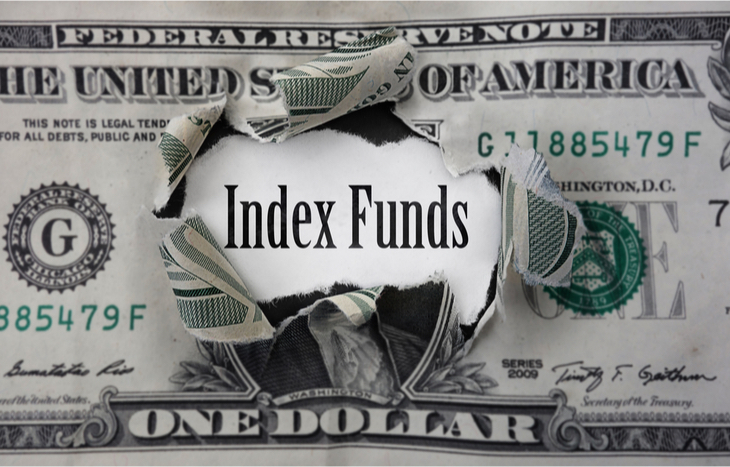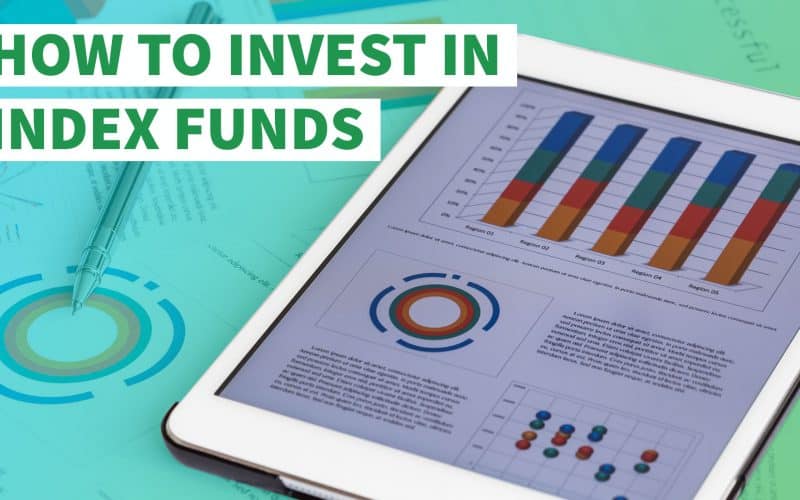Index funds are mutual funds that attempt to replicate the performance of a market index. Index funds are the greatest investing vehicle for most people, according to financial experts, because they are low-cost and low-risk options for creating wealth. This post some easy and vital steps you should follow when setting out to invest in index funds. But before then, let’s go over some vital questions, like;
Why Should you put your money in index funds?
Investing in index funds is one of the most straightforward and efficient ways for investors to accumulate money. Index funds may turn your investment into a substantial nest egg in the long run by simply replicating the spectacular performance of the financial markets over time — and best of all, you don’t have to become a stock market expert to accomplish it.
Index funds are very valuable to investors for a variety of reasons:
- You spend as little time as possible investigating specific stocks: Instead, you can trust the portfolio manager of the fund to invest in an index that already includes the stocks you want to buy.
- You Invest with a lower level of risk: Most indexes include dozens or even hundreds of stocks and other investments, so you’re less likely to lose a lot of money if one or two of the index’s companies have a terrible year.
- Index Funds cover a wide range of assets: Stock index funds and bond index funds, which cover the two major components of most investor’s strategies, are available to purchase. However, you can buy more specialized index funds that focus on specific aspects of the financial markets.
- It is significantly less expensive: Index funds are typically far less expensive than actively managed funds. That’s because an index fund management only has to buy the stocks or other investments that make up the index; you don’t have to pay them to make their own stock decisions.
- You’ll save money on taxes: In comparison to many other investments, index funds are highly tax-efficient. They, for example, don’t have to buy and sell their holdings as frequently as actively managed funds do. Hence they don’t generate capital gains that can increase your tax burden.
- It’s a lot easier to stick to your investment strategy with a plan: When you invest in index funds, you may invest automatically month after month and disregard short-term ups and downs, knowing that you’ll benefit from the market’s long-term development.
What are the Drawbacks?
Index funds aren’t for everyone, despite how simple and straightforward they are. The following are some of the disadvantages of investing in index funds:
- You’ll never be able to outsmart the market: Index funds are only designed to equal the market’s performance, so if you want to prove your worth as a better investor, you won’t be able to do so with them.
- You don’t have any kind of loss insurance: In good times and bad, index funds track their markets, and when the market falls, your index fund falls with it.
- Stock Ownership is Impossible: You may wind up holding some stocks you’d rather not own while losing out on others you’d prefer, depending on the index you chose.
You can always have a mix of index funds and other investments to solve some of these flaws and give yourself more flexibility. If you're going to rely only on index funds, you'll have to get used to their limits.
How to Invest in Index Funds

The steps below should serve as guide when you decide to invest in index funds;
#1. Determine your Index Fund investment Objectives
Before you begin investing in index funds, you should be clear about your objectives, especially when it comes to the timeframe you’ve set to achieve them.
According to Andrew Rosen, certified financial planner (CFP);
“a short time frame indicates a lower ability to take risk, which would lead you to weigh a bond index fund higher than if your time horizon was longer, which affords you the ability to take on more risk and likely increase your stock allocation.”
Remember that riskier investments, like equity index funds, provide higher potential returns in exchange for a higher level of risk. You may be compelled to withdraw your funds and sell at a loss if you don’t have enough time to ride out the market downturn.
For short-term investing, more conservative investments, such as bond-based index funds, are preferable. They provide more consistent value but lower returns. If, on the other hand, your aim is to invest for retirement, which could be decades away, stock index funds are a great means to enhance your long-term gains.
#2. Select the Most Appropriate Index Fund Strategy for Your Timeframe
After you’ve decided on your objectives and timescales, you’d need to pick an index fund whose methodology will likely help you achieve them.
Choosing the correct asset allocation, or the percentage of your portfolio that is made up of equities vs bonds, based on your timeframe is the first step in developing an index fund investing plan. In addition, regardless of how long you expect to stay invested, you must assess your risk appetite.
For example, if you can’t bear the thought of losing any of your money, you can look for more conservative choices, even if the goal is long-term.
To attain your objective, you’ll have to put more of your own money in rather than relying on investment growth. The compromise might be worth it for your peace of mind.
According to Steven Jablonski, a financial advisor at Informed Family Financial Services, here are some recommendations you may use to adjust your index fund portfolio based on your risk tolerance and timeline:
- 75 percent equities and 25% bonds for aggressive risk/longer time horizon.
- 50-60% equities and 40-50% bonds for a moderate risk/moderate timeframe.
- 25 percent equities and 75 percent bonds for a conservative risk/short timeframe.
#3. Research Potential Index Funds
By investing in hundreds—or even thousands—of different equities and bonds, index funds relieve investors of a significant amount of risk. This means you won’t have to worry about picking a single winning stock and may instead benefit from the market or industry your fund is tracking.
However, you should do your homework on the indexes you wish to invest in, as well as the particular funds that track them. Here are some indexes to think about depending on how much risk you want to take on:
For Higher Risks:
This includes indexes based on large-cap stocks, such as the S&P 500 or the NASDAQ 1000. Furthermore, low-cap indexes, which track the Russell 2000 or S&P 600 and give the opportunity to profit from small companies’ greater potential for exponential development, are also another option. Due to the more unpredictable nature of underdeveloped nations, international indices such as MSCI Emerging Markets and MSCI EAFE can also be considered higher risk.
For Low Risks:
Bond indices such as the Bloomberg Barclays U.S. Aggregate Bond Index are a good place to start. Consider indices that basically track debt issued by the federal government, such as the Bloomberg Barclays U.S. Long Treasury Bond Index or the Bloomberg Barclays U.S. Treasury 1-3 Year Bond Index, for even reduced risk.
Though most funds tracking a certain index contain the same securities, their percentages may differ slightly. This will eventually affect how well they replicate an index’s performance.
Furthermore, you’d should keep a watch out for expenses associated with index funds, such as loading and expense ratios. Sales loads are fees charged by some funds solely for buying or selling a mutual fund, whereas expense ratios cover the costs of administering a fund.
While searching around can help you minimize load fees, you’ll almost certainly have to pay some form of expense ratio regardless of where you invest. For the most part, expense rates will differ dramatically even between funds that appear to be nearly equal, so look for investments with a track record of high performance and the lowest feasible expense ratio.
Check for any investment minimums as well. In other words, to start investing with some index funds, you may need to put down at least a few thousand dollars. After the initial minimum deposit, they will often give you the luxury of investing any monetary amount you wish.
However, if you can’t locate index funds with a minimum initial deposit that you can afford, you could look into exchange-traded funds (ETFs), which track the same index but don’t have any minimum investments. This should be a last option though.
You can kickstart your index fund research online using resources provided by organizations such as Morningstar, a fund rating agency, or even the online brokerage you intend to use to invest in index funds.
#4. Open an Investment Account
You’ll need to open an investment account if you don’t already have one before you can invest in an index fund. You can invest in index funds through a variety of account types, each with its own set of objectives:
- 529 plans, for example, are education savings accounts.
- IRAs, Roth IRAs, and 401(k)s are all examples of retirement accounts
- Other than retirement, taxable brokerage accounts are available.
When looking to open an account, keep an eye out for any account-related costs. Will your preferred brokerage, for example, charge you every time you trade? If that’s the case, you would be better off looking for a brokerage that hardly charge these fees. Some even eliminate these fees entirely.
#5. Purchase Your First Index Funds
You can fund your investing account and make your index fund purchase once it’s been set up. But ensure you check any for minimum investments to ensure you’re prepared to invest at least that amount.
During this process, your broker will ask you to fill out a trade ticket, which will allow you to decide how your money is invested. For example, you’ll choose whether to buy at the market price, which is the current price at which the fund is trading on the open market, or at a limit price, which is usually a lower price than the current market price. Your buy order will not be executed until the fund’s value falls to or below your limit price if you place a limit order.
Your money is put to work in the funds of your choice once your trade is finished.
#6. Set Up a Plan to Keep Investing Regularly
Purchasing an index fund isn’t a one-time event. Rather, it’s part of a long-term plan to save and invest for the future. In other words, you’ll need a strategy to keep investing through a regular purchase schedule.
For investors, there are a few advantages to a regular purchasing plan. When you set up regular purchases, you get to take advantage of the power of dollar-cost averaging. So basically, instead of trying to time the market, you’ll make consistent, price-insensitive investments. This can reduce the cost per index fund share over time while also reducing the risk of buying shares at a high price. Regular, automated investing also ensures that you don’t forget to save for your objectives.
You should also create an investment review schedule to evaluate the performance of your index funds. This will enable you rebalance your portfolio during periodic reviews, which should happen no more than once or twice a year, to ensure that your asset allocation is still on track to help you attain your objectives.
If you’d rather not deal with this type of maintenance, you could open accounts with a robo-advisor. They will manage and rebalance a portfolio of diversified, low-cost index funds on your behalf.
However, while convenient, robo-advisors are more expensive than DIY index fund investing, even if they are still a fraction of the cost of a traditional financial advisor.
#7. Consider Your Exit Strategy
Because no one can hang on to an investment indefinitely, it’s a good idea to plan when you’ll sell your stock. Look at how long you’ve had the index fund you wish to sell if you hold your index funds in a taxable brokerage account and are subject to capital gains taxes on your earnings.
Short-term capital gains taxes equal to your regular income tax rate apply to investments held for less than a year. If you hold an investment for at least a year, however, you will only be subject to long-term capital gains tax, which should be lower than your regular income tax rate. With that in mind, delaying your cash out on an investment until you’ve had it for at least a year may allow you to reduce your tax burden.
If you have index funds in your retirement account, on the other hand, you won’t have to worry about capital gains taxes as long as you don’t take money out of it. Basically, within the confines of your 401(k) or IRA, you can buy and sell as much as you want without incurring tax consequences. When you start taking money out of these accounts, taxes become a problem. You’ll probably want to meet with a financial advisor or tax specialist to brainstorm strategies to limit your taxable income each year to reduce your tax burden on any retirement distributions.
How Do Beginners Invest in Index Funds?
You can buy an index fund from a brokerage or a company that sells mutual funds. Exchange-traded funds (ETFs), which are like small mutual funds that trade like stocks all day long, are the same (more on these below). When deciding where to buy an index fund, there are a few things to think about: Fund selection.
How Do I Start an Index Fund?
Investing in index funds
- Review your finances and objectives. Before investing, it is essential to assess your personal situation and long-term objectives.
- Select an index.
- Choose the index funds in which to invest.
- Open a brokerage account and purchase shares of index funds.
What Is an Example of Index Fund?
A “index fund” is a sort of mutual fund or exchange-traded fund that attempts to replicate the market index’s performance. Index funds may strive to replicate the S&P 500 Index, the Russell 2000 Index, and the Wilshire 5000 Total Market Index, among other market indices.
How Do You Make Money From Index Funds?
How do index funds generate profits? Index funds generate income by generating a return. They are meant to replicate the returns of their underlying stock market index, which is sufficiently diversified to prevent significant losses and perform well.






